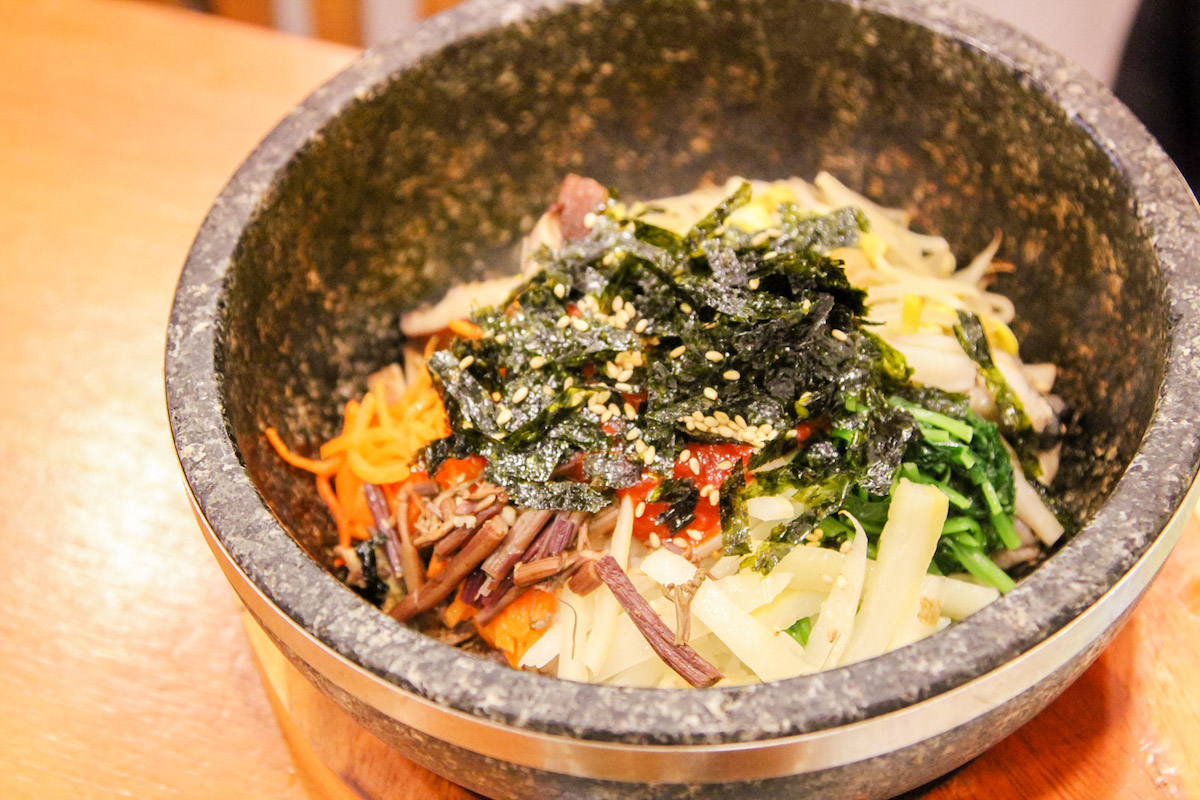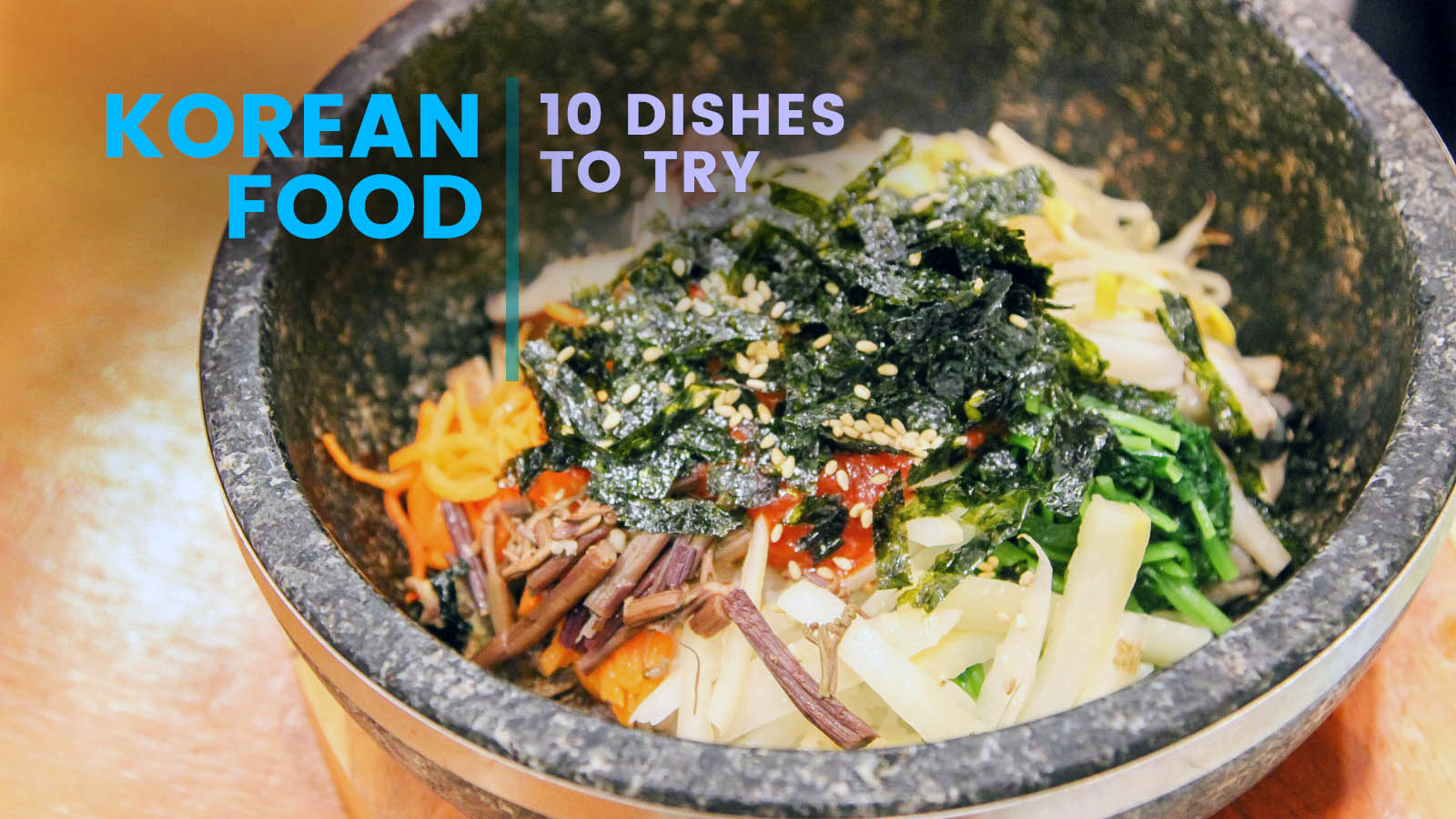This is the very first time I am writing something about food. I love to eat, but for the longest time, I wasn’t the type of person who would explore and try to taste everything. But living here in South Korea for years has expanded the range of tastes that my palate can appreciate. Their wide array of delicacies is definitely worth the try. I promise you, Korean food won’t disappoint you.
Here is a list of Korean dishes that I have learned to love, and which I encourage you to try when you come visit Korea.
1. Samgyeopsal (삼겹살)
This is by far my favorite Korean food. Samgyeopsal means ‘three layered flesh’ (three: sam, layered: gyeop, flesh: sal). It refers to the three layers that are visible on the pork belly meat. The unseasoned pork belly meat is cooked on a grill, dipped in sesame oil and salt mixture, wrapped in lettuce with ssamjang, kimchi, garlic. And what’s exciting about eating this is you do the grilling yourself. There are restaurants that serve Samgyeopsal where the cost is depending on the weight. They can be costly.
To be able to enjoy this delicacy and binge on the meat and other kinds of food, look for Self Bars (buffet). They range from 12,000 won to 15,000 won per person. This is a must try to have a taste of Korean Barbecue (Korean method of roasting meat).
2. Dak-Galbi (닭갈비)
If you visit Nami Island, I suggest you try their Dak-galbi or spicy stir-fried chicken. It is a local specialty of Chuncheon City in Gangwon Province where Nami Island is located. Though the literal meaning of the name is chicken ribs, there is no rib meat in Dak-galbi. This dish is generally made by stir-frying marinated diced chicken in red chili paste or gochu-jang with cabbage, scallions, onions, sweet potato, perilla leaves, and rice cake (tteok). They say that this dish has earned the nickname of “university student’s galbi” in the 70s because it is relatively cheap and is usually served in large portions.
3. Bossam (보쌈)
Bossam is a boiled pork dish. I never knew boiled pork could be that delicious until I tried this dish. Pork belly or Boston butt (pork butt or shoulder), the most commonly used cuts for Bossam, is boiled in flavorful brine until tender and served thinly sliced.
Each slice is dipped in salted shrimp and wrapped in lettuce or napa cabbage with kimchi and oyster radish salad. This is one Korean dish I don’t get to eat often but I always look forward to.
4. Jjigae (찌개)
JJigae is a Korean stew. There are many varieties of jjigae depending on the ingredients. What we usually order among the jjigaes are the Kimchi-jiggae and Budae-jjigae. In Kimchi-jiggae (김치찌개) or Kimchi Stew, chopped kimchi is sautéed in oil and cooked with tofu, noodles, pork, and other vegetables. Budae-jjigae (부대찌개)or the Army Stew, on the other hand, is a hodgepodge of sausages, meatloaf, instant noodles, rice cake or tteok and assorted vegetables. They also include cheese sometimes. Oh, if you are not really into spicy food, don’t forget to tell the waiting staff to make it not too spicy by saying “anmebge juseyo”, or you’ll end up sweating profusely and face turning red.
5. Galbitang (갈비탕)
Galbitang or short rib soup is just one of the many delicious and nourishing Korean soups. This hearty soup is made by slowly boiling beef short ribs in water for a long time. This is what I consider the Korean counterpart of the famous Filipino dish, “bulalo”. Dipping the meat on soy sauce with wasabi makes the taste more exciting.
6. Ppyeo-Haejangguk (뼈해장국)
Ppyeo-haejangguk means Ox bone hangover soup. Haejangguk or hangover soup is eaten as a hangover cure (Yep, Koreans love to drink!) But it doesn’t mean you have to be drunk to eat this but eating this makes you feel good and kick start a lethargic brain.
There are other kinds of this hangover soup but I love the ppyeo or ox-bone best. This was one of the very first Korean dishes I have tasted and I have loved it ever since. This is a very nutritious soup and Koreans of all ages eat it to improve their health.
7. Mul-Naengmyeon (물냉면)
Mul-naengmyeon or cold noodles, is a great lightweight meal option. The noodles are served in a clear broth that is typically made with beef broth and/or radish water kimchi broth. It is extremely popular in the summer. Koreans also usually eat this dish after a Korean Barbecue to cleanse their palate.
Another variety of the naengmyeon is the Bibim-naengmyeon where the noodles are mixed in a red, spicy sauce. It took a while before I have learned to love this because I am not used to cold soup. But it’s refreshing taste caused me to have a change of heart. Try it for yourself!
8. Jjajangmyeon (짜장면)
Jjajangmyeon, black bean sauce noodles, was originally introduced by Chinese merchants in Chinatown of Incheon during the 1900s. It has evolved over the years to suit Korean taste buds. Jjajang means “fried sauce” and myeon means “noodles”.
According to Koreans, this is a dish that parents often treat their children with on special occasions like birthdays and graduation. The funny thing is that Koreans who are single usually gather to eat this dish on Black Day (April 14th) and commiserate with each other. Black Day is a special day celebrated by single people who have not received gifts on Valentines Day or who have no love life. But as for me, even if I am married and happily in love, I enjoy eating Jjangmyeon every now and then.
9. Bibimbap

Literally means “mixed rice.” Bibimbap is served in a bowl and is topped with seasoned veggies and chili pepper paste.
10. Bingsu (빙수)
Well, if you love the Filipino ‘halo halo’, you’ll love the Korean bingsu or shaved ice.Though this dessert is also available in the Philippines and some other parts of the world, there’s no better place to taste a variety of authentic bingsu than in Korea. Whether it’s cold or hot, this is a very good ending to a long day.
—–
These are just some of the many Korean delicacies that will definitely satisfy your tummy. One thing I love about being here in South Korea is having to enjoy sumptuous and healthy food. Koreans are conscious about their health, so they make sure that the food they eat, even their snacks are fortified with nutrients. Though Korean meals are relatively expensive, the unlimited side dishes and the large servings make them reasonable and worth it.
So practice your chopsticks skills and get ready for a food trip in South Korea!

Wow, never heard about any of these. It is always great to discover some dishes not containing kimchi or dog meat.